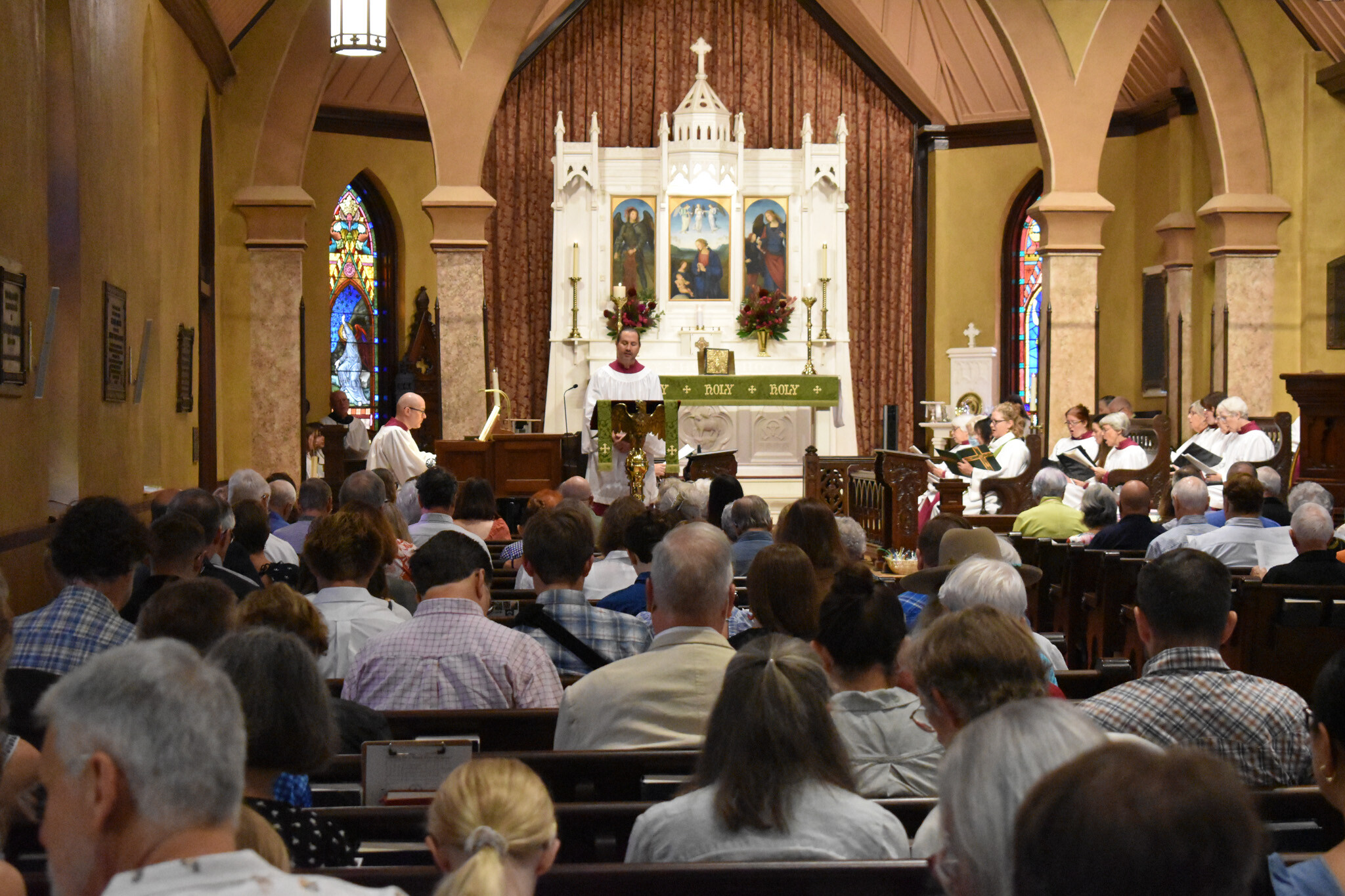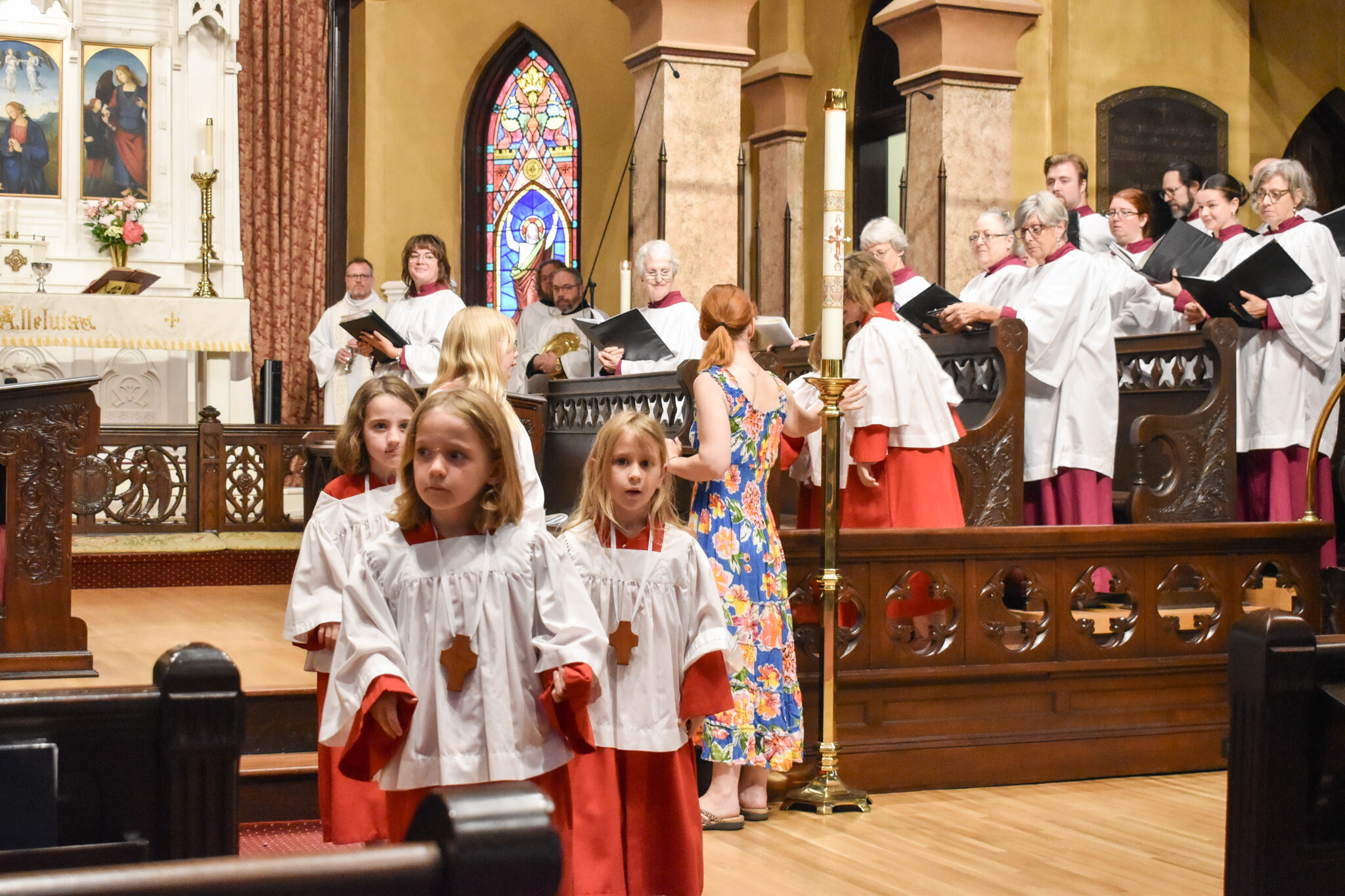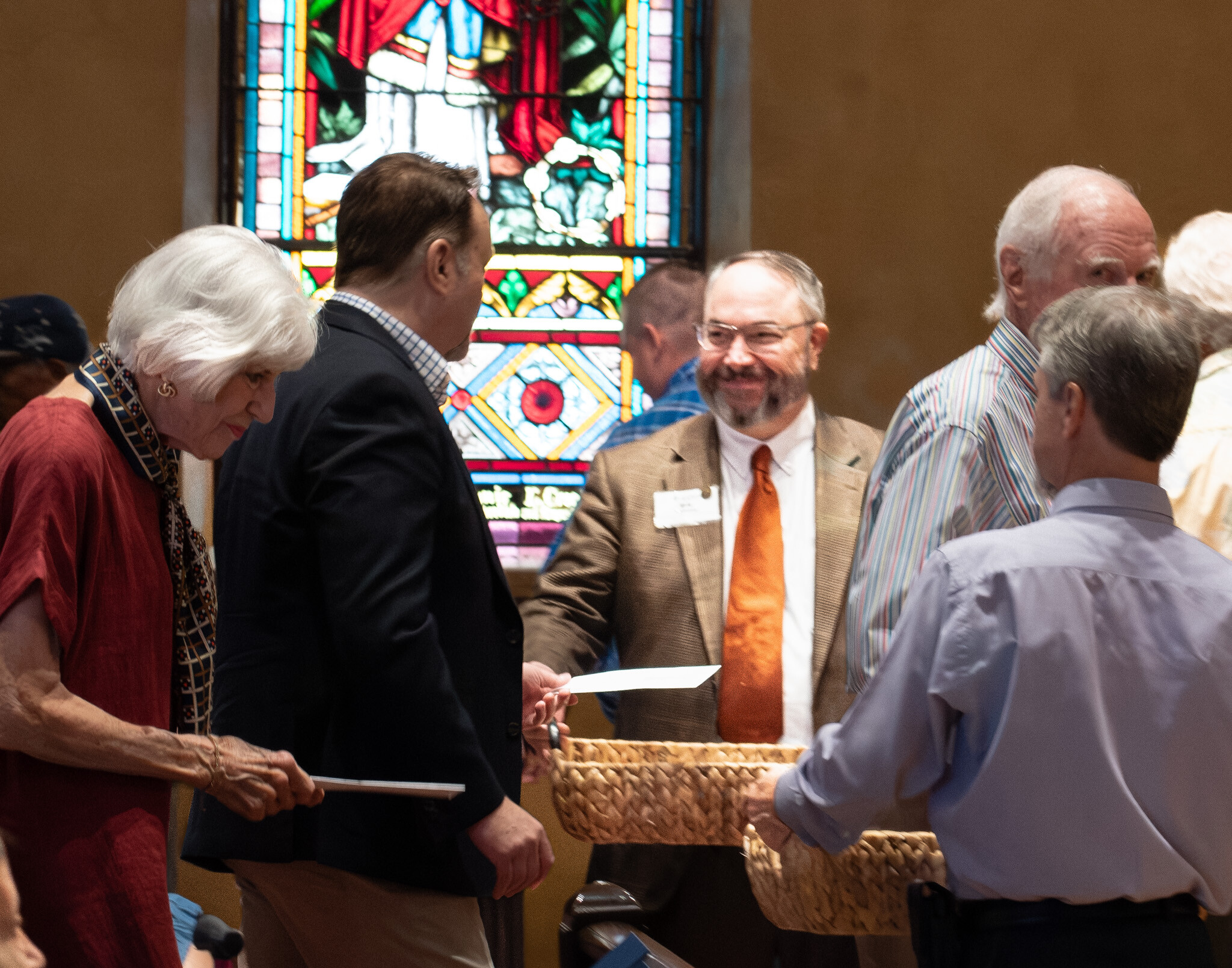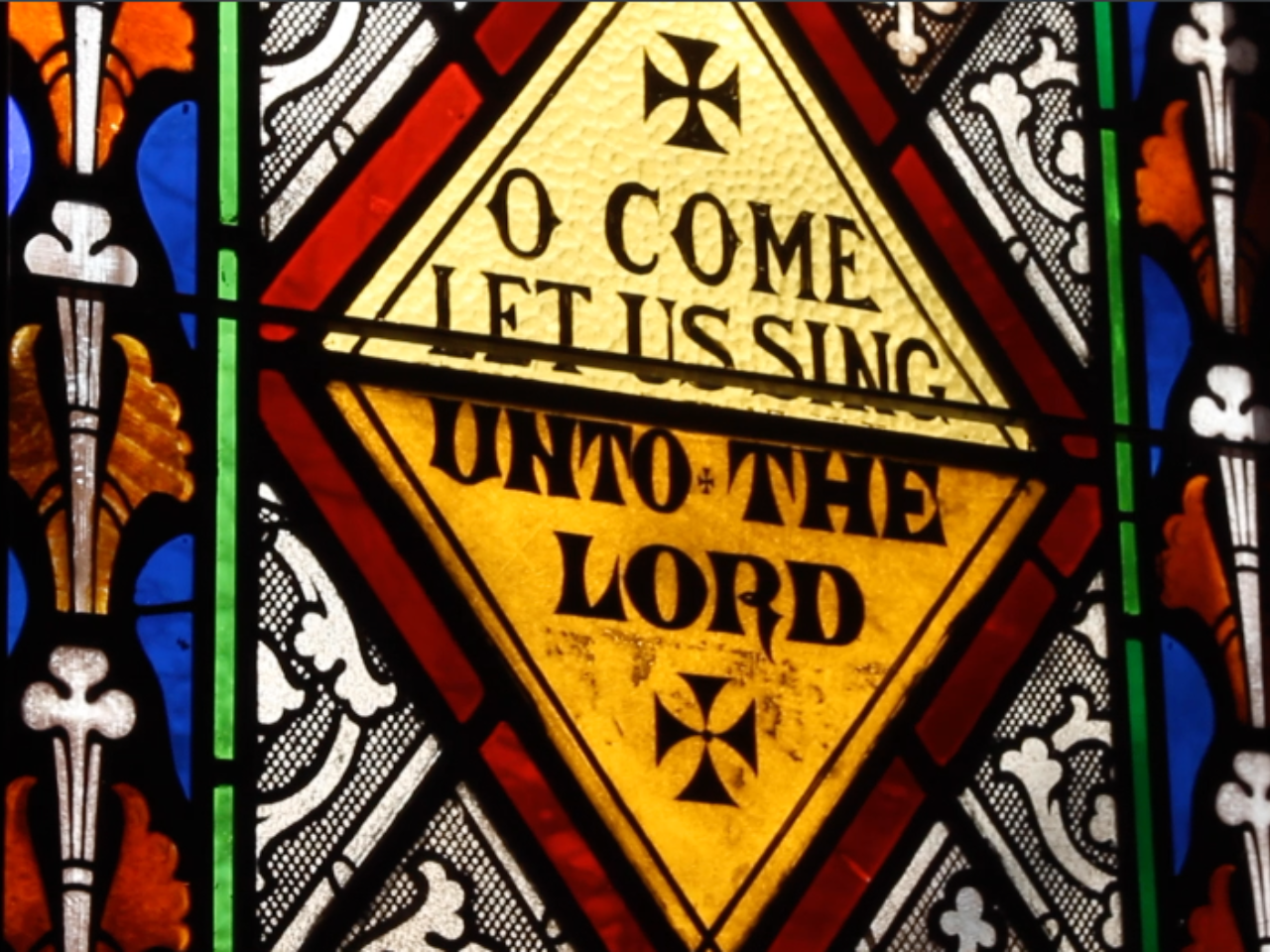
A living faith generates faithful expressions in every age, with both local and universal import. This Sunday’s hymns, service music settings, and two of our hymn-tunes all date from the second half of the twentieth century – which, in terms of the Church’s history, is recent indeed – and two of the hymns, sung far and wide, also have Austin connections.
Three of these hymns deal with the act of worship itself. Our Entrance hymn, entitled ‘Heavenly Dance’ [109 in Voices Found], enumerates some of the components of the liturgy and of the Church’s mission: gathering, singing, praising; hearing and heeding the word of God; offering gifts, partaking of the heavenly feast; reconciling and healing. Throughout resounds the call to rejoice, to pray with one’s whole self, to welcome all those made in God’s image – the latter call being not only appropriate on ‘Welcome Home Sunday’, but also urgently needed in the present hour. The hymn is one of many written by Patricia Blaze Clark, a graduate of the Seminary of the Southwest and a longtime Austin resident. Similar themes can be found in ‘I come with joy to meet my Lord’ [304], the work of Brian Wren, a prolific modern hymnist: gathering and praise; communion and (comm)unity, forgiveness and reconciliation in Christ; hearing and telling the story of faith inside and outside the Church. Finally, ‘Go forth for God’ [347] sends the people out in peace, in love, in strength, and in joy, to grow in the Spirit, to help those in need, to act in righteousness, and to serve Christ by serving the world. The text, dating from the 1960s, is based upon a benediction at Confirmation found in a proposed 1928 revision to the Church of England’s Book of Common Prayer (and used not infrequently today), in turn based on I Thessalonians 5.14–18.
Christ’s light shining in the darkness, an image that concludes st.3 of ‘Go forth for God’, is the main theme of our Sequence hymn, ‘I want to walk as a child of the light’ [490]. The text draws richly upon Scriptural light-imagery, though a language of discipleship and its ultimate goal also runs through the text: in stanza 1 ‘walk’ and ‘follow’; in 2, ‘path’ and ‘way’; in 3, ‘run...the race’ – in the case of this Sunday, a reference to the Epistle (Hebrews 11.29—12.2), whose author exhorts us to ‘run with perseverance the race that is set before us, looking to Jesus the pioneer and perfecter of our faith’. ‘I want to walk’ was written by Kathleen Thomerson, who, like Pat Clark, lived in Austin for many years until her recent death.
Thomerson also wrote the tune for her text, while ‘Heavenly Dance’ is set to a tune written by David Johnson for ‘Earth and all stars’ in the same era as the other works under discussion. With the beginning of a new program year, we return to the familiar settings of the Gloria in excelsis and Sanctus from Robert Powell’s Mass in F. All of these pieces of music carefully balance repetition of musical phrases (making them easy to learn) with variety (helping them to stand up to many years of use); in the case of the hymn-tunes in question (and many other successful ones), interleaving repeated phrases with different ones helps to disguise the repetitions, while in the case of pieces like Powell’s Gloria and Sanctus, ABA and ABB forms, respectively, follow the structures of the non-strophic texts and provide a sense of completion.
All of Sunday’s hymns challenge us, as we begin another program year, to act upon our faith in a challenging world – one perhaps not unlike the depictions found in Sunday’s Lesson, Epistle, and Gospel alike. The end of the Epistle and the closing hymn provide the good news: we follow One and many who have trod the same path, and ‘Christ at length shall overcome all darkness with his light.’





Login To Leave Comment